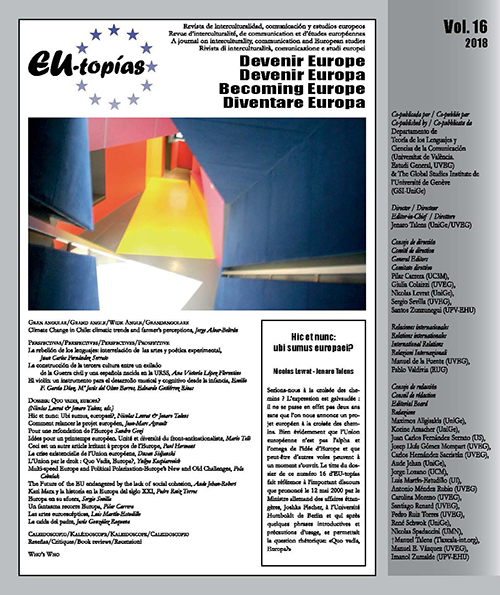The violin: an instrument of musical and cognitive development since school-aged children
DOI:
https://doi.org/10.7203/eutopias.0.18359Keywords:
Music education, cognitive development, neuroplasticity, qualitative elements of learning, violin pedagogy Abstract
Abstract
The new paradigms in neuroscience research focus on the qualitative aspects of learning that condition its significance and influence on the cognitive development of children. The new brain imaging techniques reveal an extraordinary richness demanding the creation of new educational spaces that efficiently enhance the reciprocal relationship between learning and the development of neural structures. Attending to the principles of neural plasticity and cognitive development associated to music education, our research, in natural context, proposes the violin as an effective tool in enriching children’s education and contributing to their cognitive and emotional development since the beginning of their academic life. Our Design-based Research attends to different elements that interact in the teaching-learning process in order to guarantee its viability in our education and social context.
 Downloads
Downloads
 References
References
Collins, A. (2014). Music Education and the Brain: What Does It Take to Make a Change? Update: Appli- cations of Research in Music Education, 32(2), 4-10.
Corrigall, K. A., & Trainor, L. J. (2011). Associations between length of music training and reading skills in children. Music Perception: An Interdisciplinary Jour- nal, 29(2), 147-155.
Foster, N. E., & Zatorre, R. J. (2010). Cortical structure predicts success in performing musical transfor- mation judgments. Neuroimage, 53(1), 26-36.
García Díaz, E., Del Olmo, MJ & Gutiérrez Rivas, E. (2014). Educación musical y desarrollo cognitivo asociado. Música y educación: Revista trimestral de pedagogía musical, 27(97), 28-41.
Mora, F. (2017). Neuroeducación. Alianza Editorial. Rauscher F., Shaw G., Ky K. (1993). Music and spatial task performance. Nature, 365, 611.
Rauscher, F. H., & Hinton, S. C. (2011). Music instruction and its diverse extra-musical benefits. Music Perception: An Interdisciplinary Journal, 29(2), 215-226.
Schellenberg, E. G. (2006). Exposure to music: the truth about the consequences. En McPherson, G. E. (ed.). Child as Musician: A handbook of musical development (pp. 111-134). New York: Oxford University Press.
Schellenberg, E. G., & Winner, E. (2011). Music training and nonmusical abilities: introduction. Music Perception: An Interdisciplinary Journal, 29(2), 129-132.
Tillmann, B. (2012). Music and language perception: expectations, structural integration, and cognitive sequencing. Topics in cognitive science, 4(4), 568-584. Tsang, C. D., & Conrad, N. J. (2011). Music training and reading readiness. Music Perception: An Interdisciplinary Journal, 29(2), 157-163.
Downloads
Published
How to Cite
-
Abstract435
-
PDF (Español)92
Issue
Section
License
![]()
The authors conserve the copyright. All content published in EU-topías. Journal of interculturality, Communication, and European Studies are subject to the license Creative Commons Attribution-NonCommercial-ShareAlike 4.0 license. The full text of the license can be found at <http://creativecommons.org/licenses/by-nc-sa/4.0>
They may be copied, used, disseminated, transmitted and publicly displayed, provided that:
- The authorship and original source of the publication is cited (journal, publisher and URL of the work).
- They are not used for commercial purposes.
- The existence and specifications of this license of use are mentioned.
It is the responsibility of the authors to obtain the necessary permissions for images that are subject to copyright.



